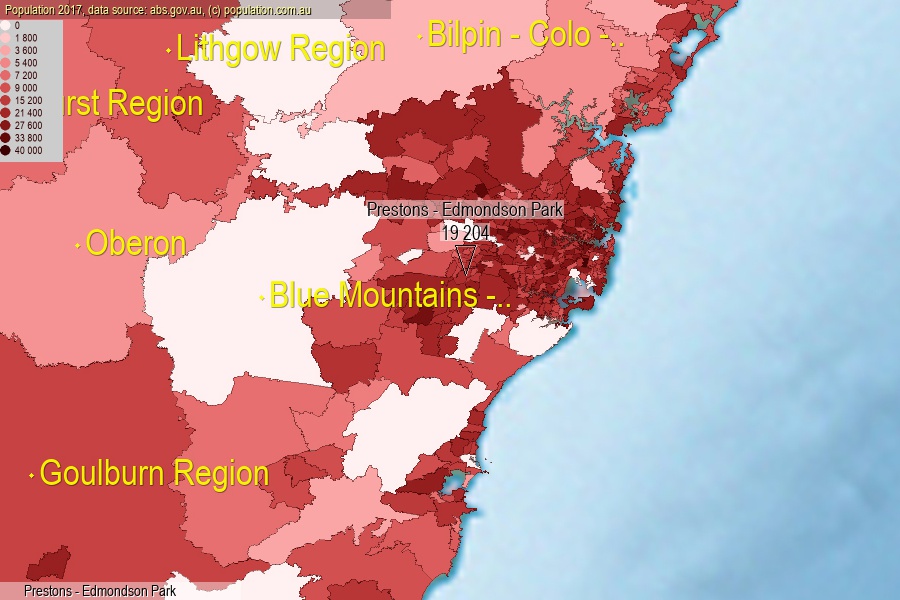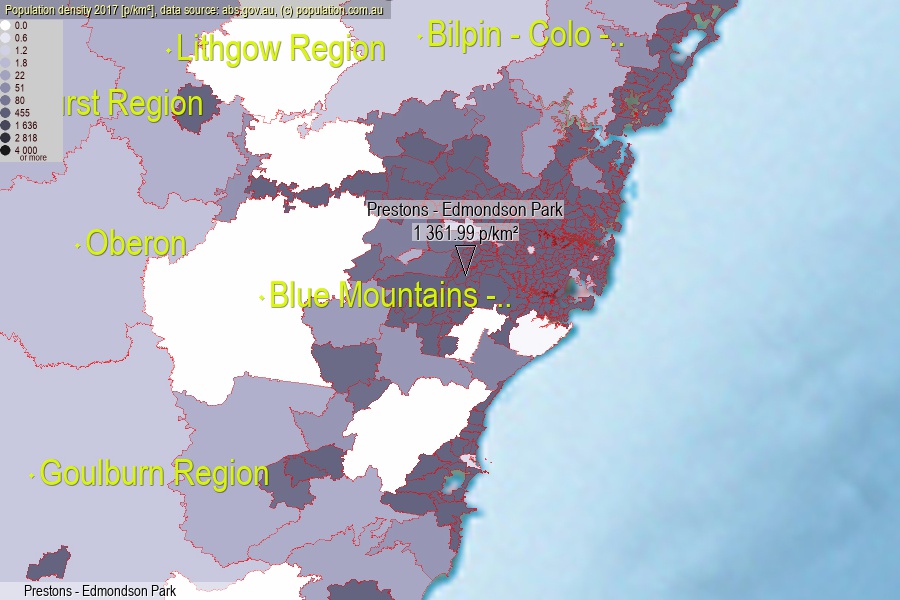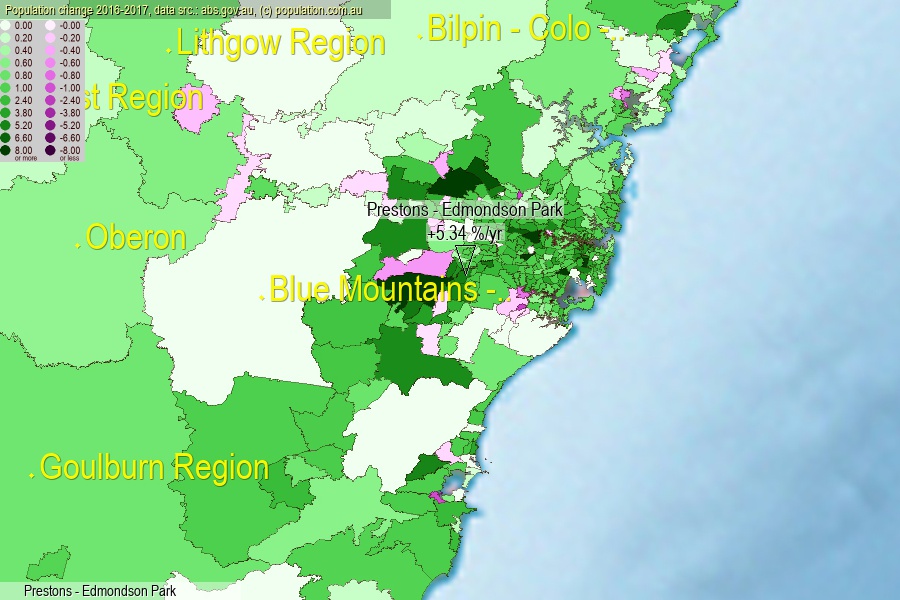 population.com.au
population.com.auLast official estimated population of Prestons - Edmondson Park (as Statistical Area Level 2) was 19 204 people (on 2017-06-30)[2]. This was 0.08% of total Australian population and 0.241% of NSW population. Area of Prestons - Edmondson Park is 14.10 km², in this year population density was 1 361.99 p/km² . If population growth rate would be same as in period 2016-2017 (+5.34%/yr), Prestons - Edmondson Park population in 2025 would be 29 110. [0]



Click to enlarge. Prestons - Edmondson Park is located in the center of the images.
Population [people], population density [p./km²] and population change [%/year] [2]
View borders » (new window) [4]
[2001-2002] +12.02 %/Yr.
[2002-2003] +6.38 %/Yr.
[2003-2004] +5.37 %/Yr.
[2004-2005] +5.24 %/Yr.
[2005-2006] +5.73 %/Yr.
[2006-2007] +4.97 %/Yr.
[2007-2008] +4.37 %/Yr.
[2008-2009] +4.74 %/Yr.
[2009-2010] +1.98 %/Yr.
[2010-2011] +1.59 %/Yr.
[2011-2012] +3.13 %/Yr.
[2012-2013] +3.42 %/Yr.
[2013-2014] +2.67 %/Yr.
[2014-2015] +3.30 %/Yr.
[2015-2016] +4.22 %/Yr.
[2016-2017] +5.34 %/Yr.
[0] Calculated with linear interpolation from officially estimated population
[1] Read more about SA2 and Australian Statistical Geography Standard (ASGS) on abs.gov.au
[2] Population data from Australian Bureau of Statistics (Population and density: 2017; change: 2016-2017)
[3] Digital Boundaries: Australian Statistical Geography Standard (ASGS) 2016.
[4] Border coordinates are simplifyed using Ramer-Douglas-Peucker algorithm.